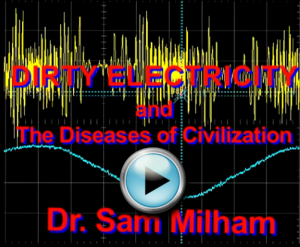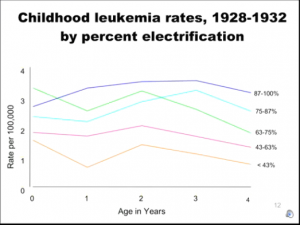Dirty Electricity and the Diseases of Civilization
Dr. Milham's groundbreaking research demonstrates a strong correlation between the rise of the so-called 'diseases of civilization' and the historical spread of electrification.
He explains how the harmonics and frequency distortions generated by appliances and microwave antennas and riding on the 60 cycle current running through household, school and office wiring can seriously impact human health.
This information is especially relevant in the context of the current controversy over wireless so-called 'smart meters.' Milham's findings show that just turning the 'radio off' in the 'smart meters' will not solve the full problem of the human health risks posed by the devices - and already experienced and testified to by thousands of injured and outraged customers. Also contained in the poorly designed devices is at least one more source of electro-magnetic pollution; a 'switching mode power supply' (SMPS). known to be a source of 'dirty electricity' capable of making many people sick.
source: http://www.sammilham.com/


